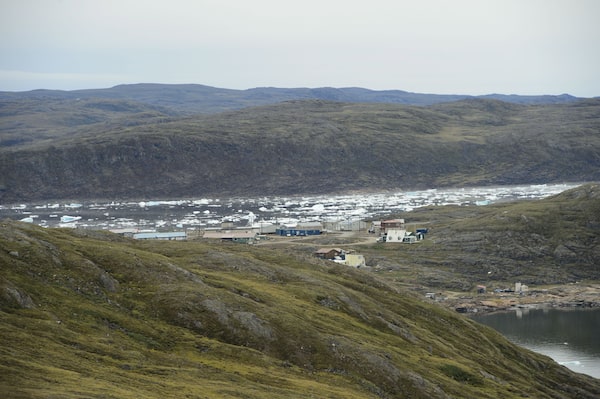
The community of Apex, Nunavut, on Aug. 2, 2019.Sean Kilpatrick/The Canadian Press
The Nunavut Planning Commission released its updated land-use proposal Thursday after years of consultation and earlier drafts.
The plan, which covers 2.1 million square kilometres of land and water, is to determine which parts of the territory are open to resource extraction, which parts require protection and which parts are off-limits.
The plan is also a legal requirement under the Nunavut Land Claims Agreement between Nunavut and the Crown, which laid the groundwork for the creation of the territory.
Earlier drafts of the plan, which has been in the works since 2007, were released in 2012, 2014 and 2016. The commission says the new draft plan was developed through consultations with all 25 Nunavut communities, hunting and trapping organizations, and Inuit organizations.
The plan acts as a guide to where resource extraction is allowed, dividing the Nunavut Settlement Area into three parts: limited use areas, conditional use areas, and mixed-use areas.
Limited use areas make up about 22 per cent of the Nunavut Settlement Area and have the tightest restrictions, including year-round prohibition on one or more types of land use.
Wildlife harvesting is exempt from the plan and will be dealt with through the Nunavut Wildlife Management Board, the commission said. Inuit harvesting rights are not affected by the plan.
Conditional use areas cover nine per cent of the settlement area and include seasonal prohibitions on land.
Mixed-use areas make up 65 per cent of the area and “have been identified for their potential to support a variety of land uses,” according to the commission. There are no prohibitions on land use in those areas.
Limited use areas also support Canada’s proposed national marine conversation areas.
For example, the areas around Tallurutiup Imanga (Lancaster Sound) is a limited use area under the proposed plan. That means things like resource exploration and production and infrastructure development is banned.
The plan also outlines guidance to developers on land use, including where and when projects will be allowed and under what conditions.
Existing rights held by companies working in Nunavut, such as mining companies, are not affected by the new plan.
Communities in all three regions of Nunavut must now review the plan through public hearings and provide feedback to the commission. In order for the plan to become legally binding, it also needs to be reviewed and approved by the federal government, the Nunavut government and the Nunavut land claims organization Nunavut Tunngavik Inc.
The commission received additional funding from the federal government to hold regional public hearings in Nunavut’s Kivalliq region and Kitikmeot regions in November 2021. It also plans to hold public hearings in the Baffin region next year, pending more federal funding.
The commission says it plans to submit the final draft plan for approval by March 31, 2022.
Our Morning Update and Evening Update newsletters are written by Globe editors, giving you a concise summary of the day’s most important headlines. Sign up today.